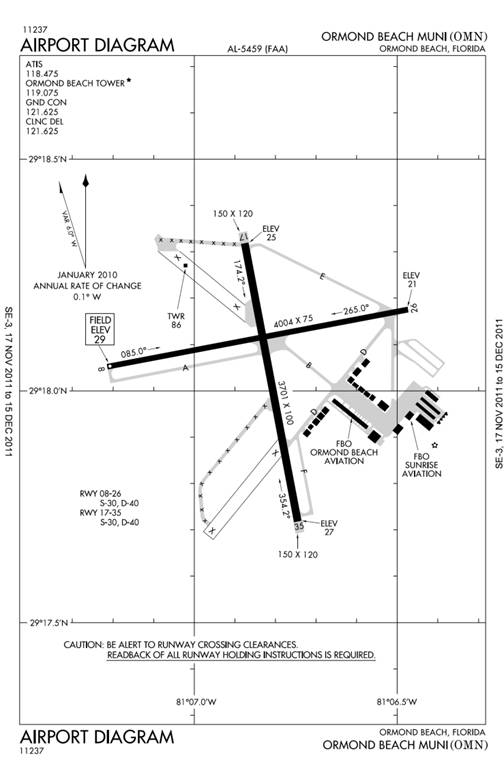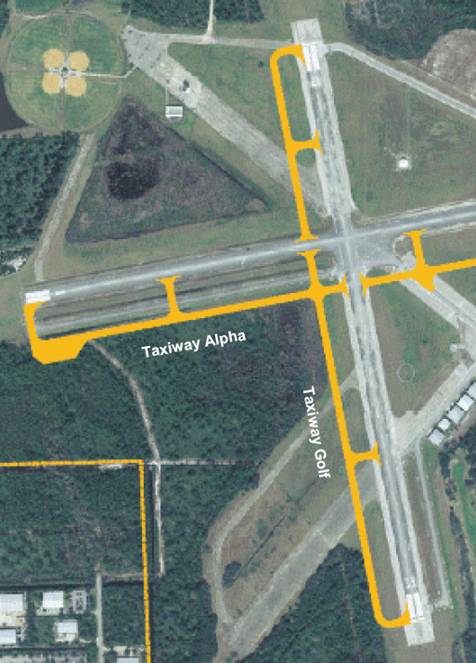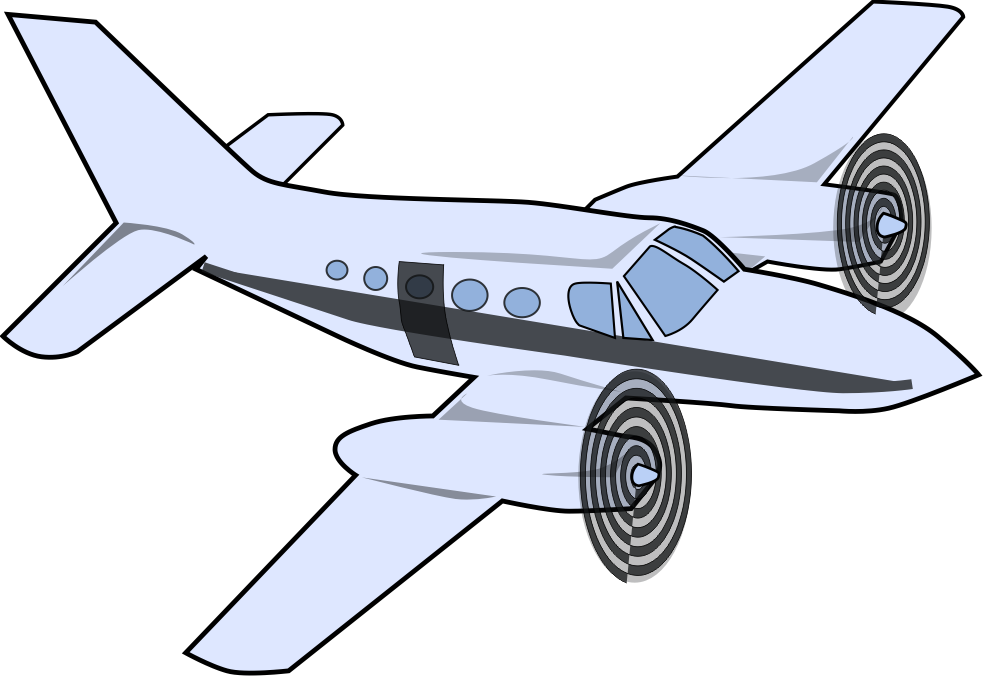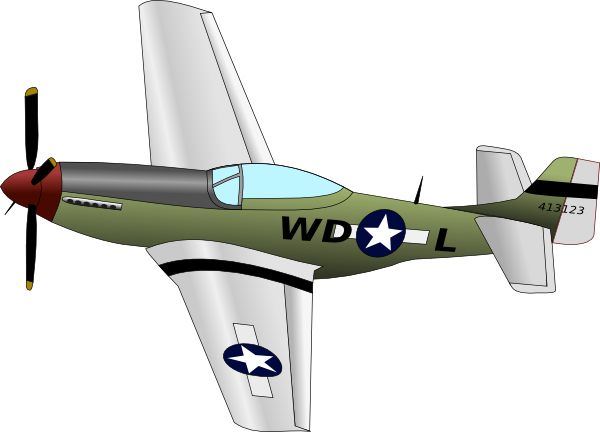ORMOND BEACH AIRPORT
The diagram below is the airport layout diagram that pilots use on the ground at the Ormond Beach Airport. The Airport has two primary runways. Runway 17/35 is the north/south runway and Runway 8/26 is the east/west runway.
Normally, aircraft takeoff or land "into the wind", on either the north/south runway or east/west runway depending on which direction the wind is coming from.
Most aircraft have maximum "tail wind" limitations, because landing with a "tail wind" generally increases the ground speed of the aircraft at landing, resulting in increased distances required to stop the aircraft.
The diagram below is the airport layout diagram that pilots use on the ground at the Ormond Beach Airport. The Airport has two primary runways. Runway 17/35 is the north/south runway and Runway 8/26 is the east/west runway.
Normally, aircraft takeoff or land "into the wind", on either the north/south runway or east/west runway depending on which direction the wind is coming from.
Most aircraft have maximum "tail wind" limitations, because landing with a "tail wind" generally increases the ground speed of the aircraft at landing, resulting in increased distances required to stop the aircraft.
TAXIWAY ALPHA AND GOLF
Currently, Taxiway Alpha, the taxiway parelleling the east/west runway is under the early stages of construction.
Taxiway Golf, the taxiway paralleling the north/south runway does not exist, has not been designed nor funded, even though the City of Ormond Beach met extensively with airport engineering consultants during the winter and spring of 2012 to discuss design and construction cost estimates for its construction.
On May 12, 2011, the City Manager of Ormond Beach provided the Mayor and Commissioners a "City Manager Memorandum". The Memorandum stated that "there are expected capital contributions by the airport (City of Ormond Beach) of 2.5% for state and federal grant funds as part of the construction costs of Taxiway Golf of approximately $15,540."
Currently, Taxiway Alpha, the taxiway parelleling the east/west runway is under the early stages of construction.
Taxiway Golf, the taxiway paralleling the north/south runway does not exist, has not been designed nor funded, even though the City of Ormond Beach met extensively with airport engineering consultants during the winter and spring of 2012 to discuss design and construction cost estimates for its construction.
On May 12, 2011, the City Manager of Ormond Beach provided the Mayor and Commissioners a "City Manager Memorandum". The Memorandum stated that "there are expected capital contributions by the airport (City of Ormond Beach) of 2.5% for state and federal grant funds as part of the construction costs of Taxiway Golf of approximately $15,540."
INSUFFICIENT TAXIWAYS
Airport ground operations are extremely limited, when insufficient taxiway infrastructure exists on an airport. This severly limits and in many cases prohibits development of unused land on an airport for aviation services - such as full service Fixed Based Operations (FBO).
Pilot's can't taxi their expensive aircraft through un-surfaced areas to park them at an FBO, because there are not any taxiways leading to that FBO. Because of that one operational restraint, (and there are many others) insufficient taxiway infrastructure, severely limits potential operations at the airport.
Pilot's taxi airplanes, and they are the ones who ultimately decide what airports they will takeoff and land at. And when pilots don't fly into airports, there is no reason for development of aviation facilities to support aircraft operations that don't exist, which is perhaps one of the real underlying reasons unspoken by the City Staff of Ormond Beach why they do not want any additional major aeronautical use economic development at all at the Airport.
When there is not development, airports stagnate. They become relics, living in the past and never become economic drivers for their communities. Even though Taxiway Alpha is being reconfigured and constructed, certaintly a step in the right direction, that's the reality of airport operations and economic development at the Ormond Beach Municipal Airport today.
Airport ground operations are extremely limited, when insufficient taxiway infrastructure exists on an airport. This severly limits and in many cases prohibits development of unused land on an airport for aviation services - such as full service Fixed Based Operations (FBO).
Pilot's can't taxi their expensive aircraft through un-surfaced areas to park them at an FBO, because there are not any taxiways leading to that FBO. Because of that one operational restraint, (and there are many others) insufficient taxiway infrastructure, severely limits potential operations at the airport.
Pilot's taxi airplanes, and they are the ones who ultimately decide what airports they will takeoff and land at. And when pilots don't fly into airports, there is no reason for development of aviation facilities to support aircraft operations that don't exist, which is perhaps one of the real underlying reasons unspoken by the City Staff of Ormond Beach why they do not want any additional major aeronautical use economic development at all at the Airport.
When there is not development, airports stagnate. They become relics, living in the past and never become economic drivers for their communities. Even though Taxiway Alpha is being reconfigured and constructed, certaintly a step in the right direction, that's the reality of airport operations and economic development at the Ormond Beach Municipal Airport today.
HANDICAPS ANY DEVELOPMENT PROPOSAL
The biggest drawback for any development of an FBO in the Southwest Quadrant of the Airport: insufficient customer access to the area due to existence of only one taxiway (Taxiway Alpha). The City needs to develop and construct Taxiway Golf for any FBO to be successful. The lack of this taxiway to the Southwest Quadrant of the Airport would hinder any proposal to develop an FBO in that area.
Arnie B. Green Associates is willing and able to work with the City on obtaining federal and state funding for Taxiway Golf.
The biggest drawback for any development of an FBO in the Southwest Quadrant of the Airport: insufficient customer access to the area due to existence of only one taxiway (Taxiway Alpha). The City needs to develop and construct Taxiway Golf for any FBO to be successful. The lack of this taxiway to the Southwest Quadrant of the Airport would hinder any proposal to develop an FBO in that area.
Arnie B. Green Associates is willing and able to work with the City on obtaining federal and state funding for Taxiway Golf.



 |
 |
 |
 |
 |
 |
 |
 |
 |
 |
 |
 |
 |
 |
 |
 |
 |
 |
 |
 |
 |
 |
 |
 |
 |
 |
 |
 |
 |
 |
 |
 |
 |
 |
 |
 |
 |
 |
 |
 |
 |
 |
 |
 |
 |
 |
 |
 |
 |
 |
 |
 |
 |
 |
 |
 |
 |
 |
 |
 |
 |
 |
 |
 |
 |
 |
 |
 |
 |
 |
 |
 |
 |
 |
 |
 |
 |
 |
 |
 |
 |
 |
 |
 |
 |
 |
 |
 |
 |
 |
 |
 |
 |
 |
 |
 |
 |
 |
 |
 |

 |
 |
 |
 |
 |
 |
 |
 |
 |
 |
 |
 |
 |
 |
 |
 |
 |
 |
 |
 |
 |
 |
 |
 |
 |
 |
 |
 |
 |
 |
 |
 |
 |
 |
 |
 |
 |
 |
 |
 |
 |
 |
 |
 |
 |
 |
 |
 |
 |
 |
 |
 |
 |
 |
 |
 |
 |
 |
 |
 |
 |
 |
 |
 |
 |
 |
 |
 |
 |
 |
 |
 |
 |
 |
 |
 |
 |
 |
 |
 |
 |
 |
 |
 |
 |
 |
 |
 |
 |
 |
 |
 |
 |
 |
 |
 |
 |
 |
 |
 |






$70 Million in New Investment
$382 Million 20-Year Impact to Ormond Beach
1800 20-Year Total New Job Effect to Region
$2.0 Million New State & Local Taxes Upon Completion of First Year of Operations
Robust Operations Facility - Not Just Aircraft Storage Hangars
800 Years Total Airport
Development, Engineering & Aviation Team Experience
100+ Years Total Military Command, Control, Operational, Flight & Ground Experience
Robust Aircraft Noise Abatement Program
Protects City from Financial Risk and Liability
No Ormond Beach Funds Required for Financing of Development
$382 Million 20-Year Impact to Ormond Beach
1800 20-Year Total New Job Effect to Region
$2.0 Million New State & Local Taxes Upon Completion of First Year of Operations
Robust Operations Facility - Not Just Aircraft Storage Hangars
800 Years Total Airport
Development, Engineering & Aviation Team Experience
100+ Years Total Military Command, Control, Operational, Flight & Ground Experience
Robust Aircraft Noise Abatement Program
Protects City from Financial Risk and Liability
No Ormond Beach Funds Required for Financing of Development



